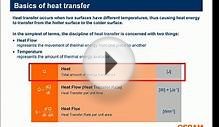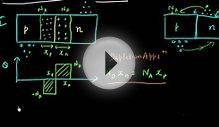Transistors, diodes, integrated circuits and many more devices all have semiconductor technology in common.
Before looking at how some of these devices work it is necessary to have a basic understanding of what conductors, insulators and naturally what semiconductors are.
What are conductors and non-conductors
In terms of electricity there are two main classes of material: namely: conductors and non-conductors (or insulators). From their names it can be gathered that conductors will conduct electricity freely, whereas non-conductors act as insulators preventing the flow of an electric current.
An electric current is made up of the flow of electrons. This means that for a current to flow, the electrons must be able to move freely within the material. In some materials electrons are moving freely around the lattice, not particularly attached to a given electron. At any instance electrons are moving freely but randomly. By placing a potential difference across the conductor the electrons can be made to drift in one direction and this constitutes an electric current. Metals are all conductors of electricity, and a number of other substances also conduct it to varying degrees.
Other substances do not have electrons moving freely around the lattice. Electrons are firmly held within their molecules and cannot escape easily. Accordingly when a potential is placed across the substance very few electrons will move and very little or no current will flow. These substances are called non-conductors or insulators. They include most plastics, ceramics and many naturally occurring substances like wood.
What are semiconductors
As the name suggests a semiconductor is neither a true conductor nor an insulator, but half way between. A number of materials exhibit this property, and they include germanium, silicon, gallium arsenide, and a variety of other substances.
To understand how it acts as a semiconductor it is necessary to first look at the atomic structure of pure silicon, a good insulator. It consists of a nucleus with three rings or orbits containing electrons, each of which has a negative charge. The nucleus consists of neutrons that are neutral and have no charge, and protons that have a positive charge. In the atom there are the same number of protons and electrons so the whole atom has no overall charge.
The electrons are arranged in rings with strict numbers of electrons. The first ring can only contain two, and the second has eight. The third and outer ring has four. The electrons in the outer shell are shared with those from adjacent atoms to make up a crystal lattice. When this happens there are no free electrons in the lattice, making silicon a good insulator. A similar picture can be seen for germanium. It has two electrons in the inner most orbit, eight in the next, 18 in the third, and four in the outer one. Again it shares its electrons with those from adjacent atoms to make a crystal lattice without any free electrons.
Impurities
The properties of semiconductors change very significantly by adding very small amounts of impurity. If traces of impurities of materials having five electrons in the outer ring of their atoms are added they enter the crystal lattice sharing electrons with the silicon. However as they have one extra electron in the outer ring, one electron becomes free to move around the lattice. This enables a current to flow if a potential is applied across the material. As this type of material has a surplus of electrons in the lattice it is known as an N-type semiconductor. Typical impurities that are often used to create N-type semiconductors are phosphorous and arsenic.
It is also possible to place elements with only three electrons in their outer shell into the crystal lattice. When this happens the silicon wants to share its four electrons with another atom with four atoms. However as the impurity only has three, there is a space or a hole for another electron. As this type of material has electrons missing it is known as P-type material. Typical impurities used for P-type material are boron, and aluminium.
Want more like this? Register for our newsletter
RELATED VIDEO

